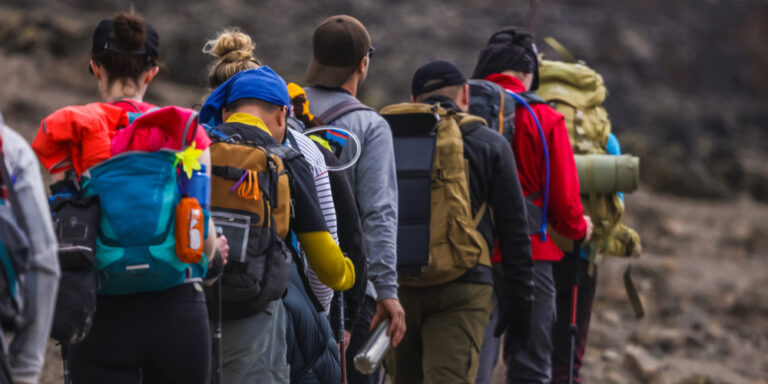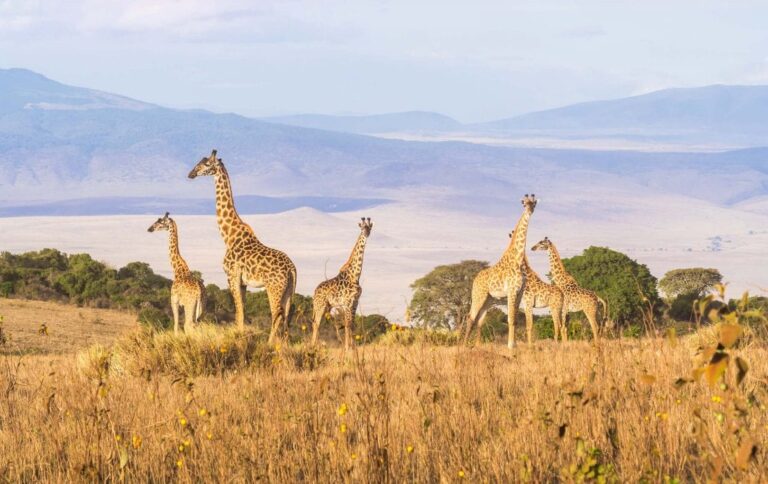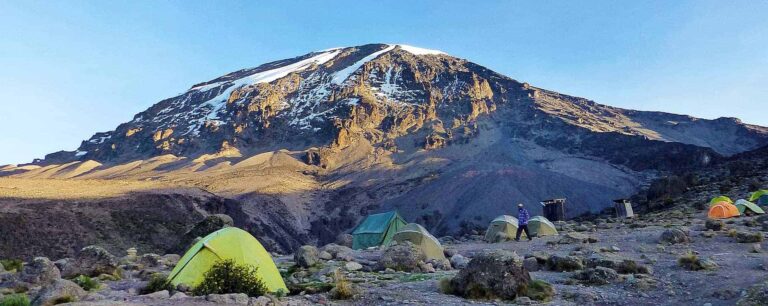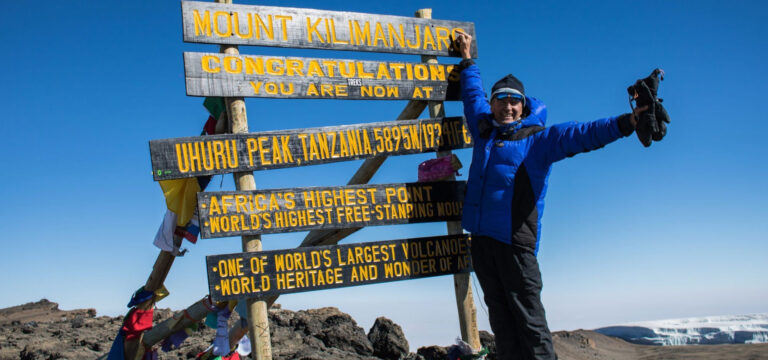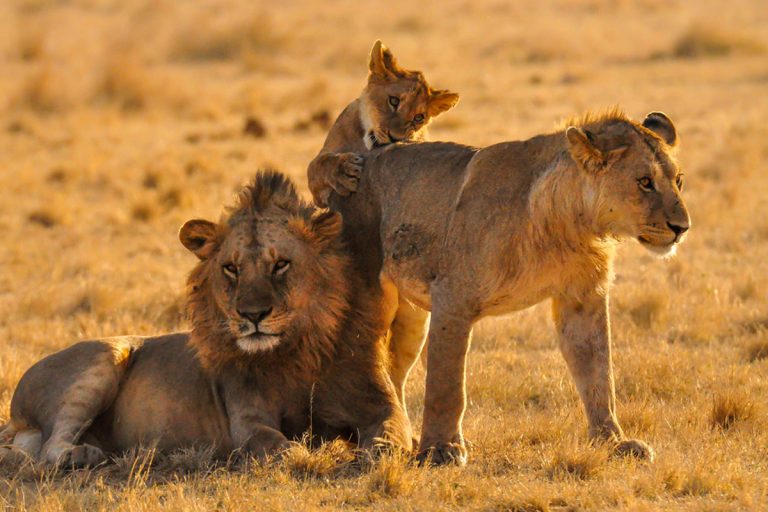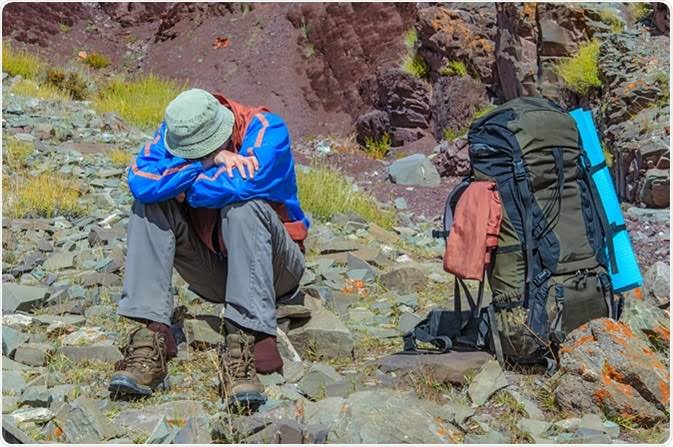If you plan to climb Mount Kilimanjaro, you will undoubtedly hear about acute mountain sickness. Tecomate Tours and Safari has provided answers to the most frequently asked questions about acute mountain sickness for individuals who are unfamiliar with the intricacies of altitude disease.
WHAT IS ACUTE MOUNTAIN SICKNESS?
acute mountain sickness is also referred to as altitude sickness and is caused by the body’s failure to acclimatize to decreased levels of oxygen in the blood. At sea level, the oxygen content is roughly 21% and the barometric pressure is 760 mmHg. The oxygen concentration remains constant as altitude climbs, but the number of oxygen molecules each breath decreases due to decreasing barometric pressure.
The barometric pressure drops to 483 mmHg at 3,000 meters, resulting in nearly 40% fewer oxygen molecules per breath. Your body responds by breathing more quicker in order to raise oxygen levels in the blood. Although oxygen levels rise, sea level concentrations remain unattainable. The body must adapt to less oxygen. This is referred to as acclimatization. Acclimatization is impossible above 5,500 meters, and the body begins to decline.
ACCLIMATIZATION
The main cause of altitude sickness is ascending too quickly. Your body will adjust to the decrease in oxygen at a specific altitude given enough time. Acclimatization is a process that typically takes one to three days at any particular altitude. After climbing to a higher level, the body must readjust to the new altitude for one to three days.
In order to cope with decreased oxygen levels, the body reacts in the following ways:
- Respiration frequency and depth increases
- Pressure in pulmonary arteries is increased, “forcing” blood into portions of the lung which are normally not used during sea-level breathing.
- Additional red blood cells are produced to carry oxygen
- Enzymes are produced to facilitate the transfer of oxygen from haemoglobin to body tissues.
- It is imperative that hikers be aware of symptoms of acute mountain sickness during Kilimanjaro and Meru trips and that they communicate with the guide regularly regarding their condition. It is very important to rest and not ascend further if experiencing severe symptoms of AMS.
ACUTE MOUNTAIN SICKNESS (AMS)
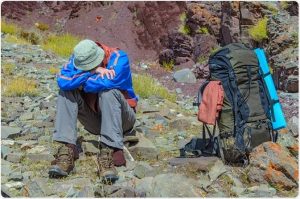 acute mountain sickness is common at high altitudes, with 80% of people reporting some symptoms over 3,000 meters (9,842 ft). A lot of factors influence the severity of AMS, including climb rate, height, and individual vulnerability. Symptoms often develop 12 to 24 hours after ascending and gradually subside by the third day.
acute mountain sickness is common at high altitudes, with 80% of people reporting some symptoms over 3,000 meters (9,842 ft). A lot of factors influence the severity of AMS, including climb rate, height, and individual vulnerability. Symptoms often develop 12 to 24 hours after ascending and gradually subside by the third day.
Slight AMS symptoms include:
Migraine symptoms include headache, nausea, dizziness, lack of appetite, tiredness, shortness of breath, and inability to sleep.
As long as the symptoms are modest, hikers can continue to ascend slowly. All AMS symptoms should be reported to the head guide, who should provide daily progress updates.
Average AMS symptoms include:
Symptoms include severe headaches, nausea and vomiting, increased weakness and tiredness, shortness of breath, and decreased coordination. Although the hiker may be able to continue walking while experiencing minor AMS symptoms, the typical activity becomes more difficult as the hiker gains altitude. Only medication and descent may currently alleviate AMS symptoms. Even a 300-meter drop will result in a significant improvement. All moderate AMS symptoms should be reported to the guide, who will subsequently decide whether or not to evacuate. Based on his or her symptoms, the climber may be instructed to walk in a straight line. If he or she is unable to walk a straight line on his or her own, an urgent descent is necessary.
Severe AMS symptoms include:
Shortness of breath, loss of ability to move, diminished mental awareness, and fluid buildup in the lungs are all symptoms of COPD. Severe AMS can only be treated by descending to lower elevations immediately.
OTHER SEVERE ALTITUDE-RELATED ILLNESSES
Failure to descend to lower elevations may result in two further severe kinds of altitude sickness. High Altitude Pulmonary Edema (HAPE) and High-Altitude Cerebral Edema (HACE) are two examples. Although these occur less frequently, they are mainly the result of rapid ascents by people who have not been adequately acclimatized. When there is a dearth of oxygen in the body, fluid leaks through the capillary walls into the lungs or the brain. In the event of HAPE, immediate descent is required. Patients should be flown to a medical centre for further care.
HIGH ALTITUDE PULMONARY EDEMA (HAPE)
Fluid buildup in the lungs causes HAPE, which can hinder sufficient oxygen exchange. Severe HAPE can result in brain damage, cyanosis, and death. Shortness of breath at rest; fatigue and weakness; a feeling of impending suffocation or drowning; grunting or gurgling sounds when breathing; a persistent cough that produces white, watery, or frothy fluid; disorientation and unpredictable behaviour are all indications of HAPE. Immediate descent is essential in the event of HAPE. Patients should be airlifted to a medical facility for further treatment.
HIGH ALTITUDE CEREBRAL EDEMA (HACE)
The swelling of brain tissue induced by fluid leakage causes HACE. Headache, loss of coordination (ataxia), weakness, and declining levels of awareness, including disorientation, memory loss, hallucinations, blindness, and coma, are all symptoms. HACE typically occurs after a week or more at a high altitude. Severe cases can be fatal if not handled quickly, and an emergency descent is a life-saving procedure. Following HACE, patients must need follow-up care at a medical center.
PREVENTING ALTITUDE SICKNESS
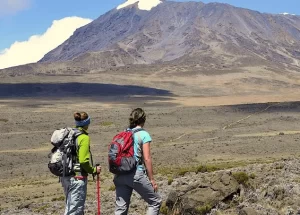 The two strategies for preventing altitude-related disorders are proper acclimatization and preventative drugs. This advice is specific to Mounts Meru and Kilimanjaro in Tanzania and may not be applicable to other high mountains. Tecomate Tours and Safaris always advise our climbers to follow a ‘pole pole’ pace and drink enough water as the best way to avoid altitude sickness.
The two strategies for preventing altitude-related disorders are proper acclimatization and preventative drugs. This advice is specific to Mounts Meru and Kilimanjaro in Tanzania and may not be applicable to other high mountains. Tecomate Tours and Safaris always advise our climbers to follow a ‘pole pole’ pace and drink enough water as the best way to avoid altitude sickness.
- Inform the guide about your AMS symptoms and keep him and the other group members updated on your progress.
- Climb high, sleep low. Acclimating during the day by climbing to high elevations and then lowering to sleep is advised.
- If you have signs of moderate altitude disease, don’t move higher until the symptoms subside.
- If symptoms become severe, descend.
- Maintain proper hydration. Acclimatization is frequently accompanied by fluid loss, so drink enough of fluids to stay hydrated (at least 4-6 liters per day). Urine should be crystal clear.
- Don’t overdo it when you’re at altitude. Because breathing reduces during sleep, light exercise throughout the day is preferable to sleep.
- Avoid tobacco and alcohol and other depressant drugs including, barbiturates, tranquillizers, and sleeping pills. Depressants further decrease the rate of respiration during sleep resulting in a worsening of the symptoms.
- Eat a high-calorie diet of which 70% is carbohydrates.
PREVENTATIVE MEDICATIONS
Diamox (Acetazolamide) Diamox is a drug that allows you to breathe faster so that you metabolize more oxygen. Although the gradual ascent is recommended as opposed to Diamox, the drug does help to avert symptoms of Altitude Mountain Sickness. 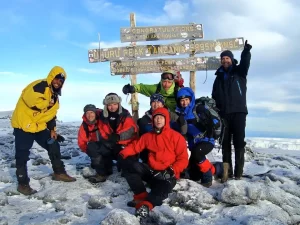 Because it takes a while for Diamox to have an effect, it is advisable to start taking it 24 hours before you go to altitude and continue for at least five days at a higher altitude. The recommended dose is between 125 mg and 250 mg twice daily starting one to two days before the trek and continuing for three days once the highest altitude is reached. Possible side effects include tingling of the lips and fingertips, excessive urination, blurring of vision, and alteration of taste. Contact your physician for a prescription. Since Diamox is a sulfonamide drug, people who are allergic to sulfa drugs should not take Diamox. Diamox has also been known to cause severe allergic reactions in people with no previous history of Diamox or sulfa allergies. (There are other medications that may be taken to prevent altitude sickness. You must ask your doctor if they are right for you.)
Because it takes a while for Diamox to have an effect, it is advisable to start taking it 24 hours before you go to altitude and continue for at least five days at a higher altitude. The recommended dose is between 125 mg and 250 mg twice daily starting one to two days before the trek and continuing for three days once the highest altitude is reached. Possible side effects include tingling of the lips and fingertips, excessive urination, blurring of vision, and alteration of taste. Contact your physician for a prescription. Since Diamox is a sulfonamide drug, people who are allergic to sulfa drugs should not take Diamox. Diamox has also been known to cause severe allergic reactions in people with no previous history of Diamox or sulfa allergies. (There are other medications that may be taken to prevent altitude sickness. You must ask your doctor if they are right for you.)
Ibuprofen relieves altitude-induced headaches.
Nifedipine quickly lowers pulmonary artery pressure and appears to be capable of reducing pulmonary artery constriction caused by low oxygen levels, hence enhancing oxygen transmission. It can thus be used to treat HAPO, however, its effectiveness is not nearly as dramatic as that of dexamethasone in HACO. The recommended dose is 20mg of long-acting nifedipine every six to eight hours.
Frusemide In HAPO, it may cleanse the lungs of water and restore the suppression of urine caused by altitude. However, if the person is already dehydrated, frusemide might cause collapse from low-volume shock. The daily therapeutic dose is 120mg. Although you may encounter mountain sickness during your trek, our guides are trained on the proper ways to take you up to allow your body to acclimatize and are having certificates of First Aid on how to handle clients with mountain sickness. Rest assured in case of anything during your mountain trekking with us we have a proper rescue plan

